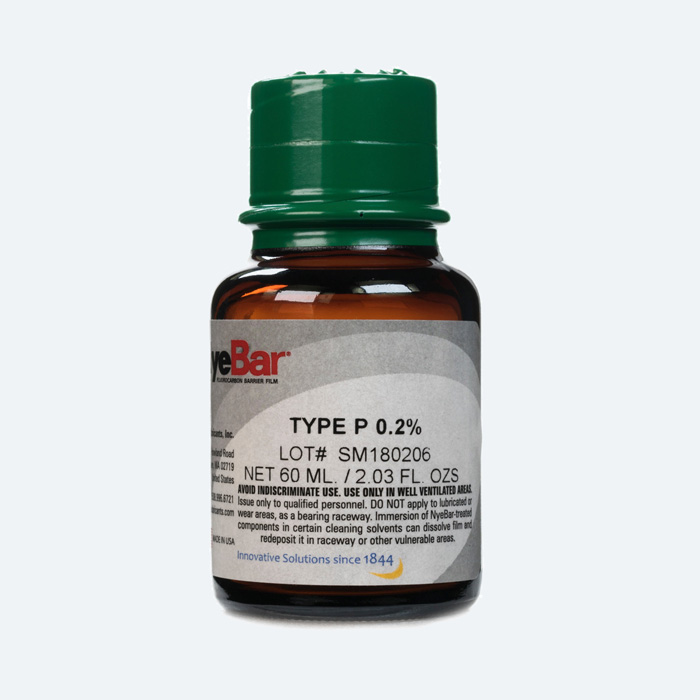NyeBar (barrier film)
Download PDF documentationInformation guide
NyeBar® from Nye Lubricants® is a clear fluorocarbon barrier film that prevents oil migration and contamination of nearby sensitive components. Liquids, such as oils, will spread over, or "wet" any surface whose surface energy is greater than the surface tension of the fluid. Because of the very high surface energies of metals, fluids will easily spread or crawl over any clean metal surface. Once applied, a thin layer of NyeBar® modifies the surface of a metal or other solid, allowing it to slow the migration or creep of fluids on that surface. This prevents oil from reaching critical components, reducing the risk of contamination and failure.
Features and Benefits:
- Oleophobic (repels oil)
- Prevents oil creep and migration
- Protects against contamination
- Resists moisture
- Improves electrical reliability
Where is NyeBar® used?
NyeBar® is a proven and reliable solution for controlling oil migration, and has even been used on the Mars Rover to protect camera optics. NyeBar® barrier films are most often used when lubricant migration is an issue, including:
- Bearings
- Actuators
- Printed circuit boards
- Optics...
Where should I apply NyeBar® barrier films?
When using NyeBar® to prevent the migration of lubricating oils, the NyeBar® solution should not be applied in the area requiring lubrication, but rather as a barrier around that area. For example, a lubricant should be applied to the bearing shaft rather than the raceway. This is because the barrier film would make these components non-wettable by the lubricant, resulting in a lack of lubrication and subsequent component failure. If NyeBar® is accidentally applied to these components, it can be removed using fluorinated solvents and - to a lesser extent - chlorinated solvents.
How do I apply NyeBar® barrier films?
NyeBar® can be used to coat a variety of materials, including copper, aluminum, steel, tin, plastic and glass. NyeBar® products are most often applied with a brush-cap bottle and are applied like nail polish to create a barrier around lubricated parts. They can also be applied by dipping or spraying onto the component. Air-drying for five minutes allows the carrier solvent to evaporate, leaving a very thin, but perfectly effective barrier film.
_1673427121.png)
